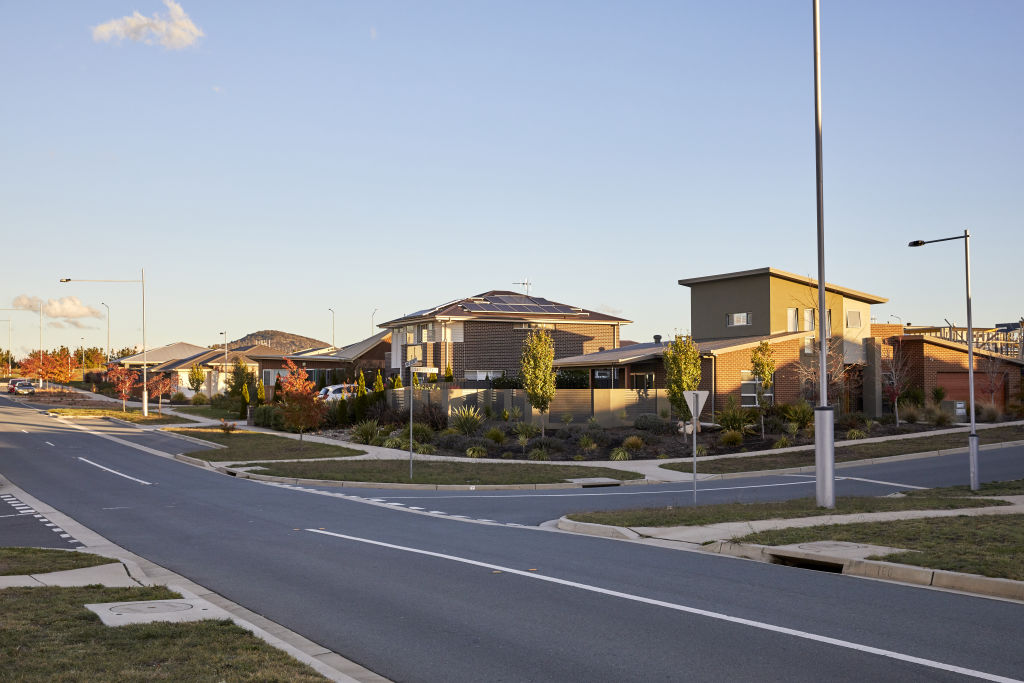‘It’s like a lottery’: Time on market grows as auction clearance rates fall

The time it takes to sell a home in Canberra has increased as the auction clearance rate has dipped to pre-pandemic lows.
The Domain Auction Report for July revealed that the city’s auction clearance rate hit its lowest point since April 2020, reaching only 54.9 per cent during the month. This is a significant drop year-on-year, down from 86.3 per cent in July 2021.
Similarly, the auction clearance rate last Saturday was just 50 per cent, dropping from 83 per cent on the same weekend last year.
In early 2021, most auction campaigns lasted just three weeks due to high buyer demand, and agents now say properties are on the market for a month or more.

Adjustments are having to be made for homes that aren’t successfully selling at auction, said Jonny Warren of Jonny Warren Properties.
“We’re already adjusting the prices of homes and making those decisions after several weeks on the market,” he said.
“Our average days on the market last quarter was 16 days on average, and now we are starting to see this creep over 30 days for particular properties
“It’s like a lottery; some homes are selling after [auction] and others are just sitting there.”
Winter tends to be a quieter period in the housing market, but there were abnormally high sales last winter, Warren added.
“This year, we have been hit with interest rate rises, a new government, and a lot of uncertainty in the economy,” he said.
“We are having to be more selective with the homes we are choosing to take to auction at the moment.
“I feel like putting a price point on the homes [instead] has … generated more interest with buyers.”

Andrew Chamberlain of Blackshaw Manuka said the number of bidders at auction had also noticeably decreased, and non-auction sale periods were also being affected.
“The sale time of non-auction properties has increased, with sellers needing to be well advised by their agents on the pricing strategy to avoid delays,” he said.
“Statistically, the number of bidders per auction is down by about half as well, but we are finding the majority of properties listed for auction still sell in the same timeframe as before.”
Chamberlain added there was a likelihood that sale periods would continue to increase for some homes before the market stabilised.
“This is normal after a period of strong growth followed by a modest correction,” he said.
“Both buyers and sellers may be a little tentative in their initial negotiating positions before the market finds its new natural level.
“Essentially, overall stock levels remain low, and well-priced homes are still selling quickly.”

Peaks and troughs are not uncommon in the housing market, according to new Domain analysis.
Domain chief of research and economics Dr Nicola Powell said a rise in house prices was always followed by a decline.
According to the analysis, upswings in house prices increase by 32.7 per cent over 2.75 years and experience a slight downturn of three per cent in just 0.75 years.
“We are now in the next stage of the property cycle – a downturn,” Powell said.
“Unlike [previous downturns], interest rates are rising, increasing the cost of a home loan and reducing borrowing capacity at a time when living costs are soaring.
“It is also important to remember that the ups and downs of house prices are illustrative of a healthy property market, just like the expansion and contraction of an economy.”
We recommend
States
Capital Cities
Capital Cities - Rentals
Popular Areas
Allhomes
More









